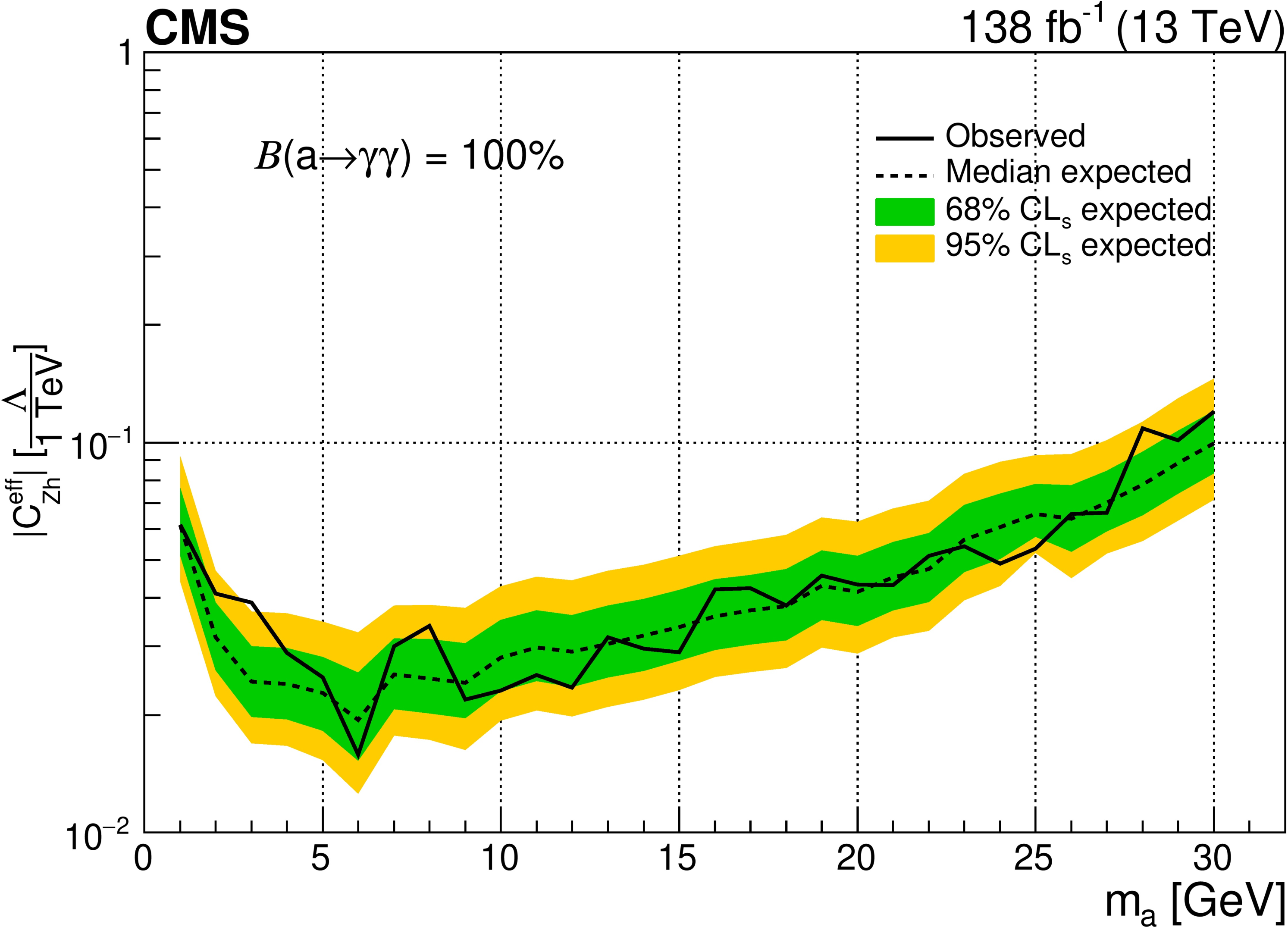
More than a decade after the discovery of the Higgs boson, we still expect this particle to give us first-hand information about theories that can solve some of the shortcomings of the standard model of particle physics (SM). For example, the anomalous magnetic moment of muons could be explained by new states known as Axion-like particles, ALPs, that could in turn interact with the Higgs boson. Such interactions mean that ALPs - if they are light enough - can be produced in decays of the Higgs boson.
The CMS experiment has looked for ALPs in H -> Za decays for the first time. Here, H and Z represent the Higgs and Z bosons, respectively, while a indicates the ALP. As both the Z boson and the ALP are unstable particles, they decay to more stable ones. In this analysis, CMS chose to look into the cases where the ALP decays into a pair of photons, while the Z boson decays either to a pair of oppositely charged electrons or muons, collectively called leptons (ℓ). A schematic picture of this process is shown in Fig. 1.

Figure 1: A Feynman diagram of the Higgs boson production and its decay to an ALP and a Z boson. The Z boson decays to a lepton while the ALP decays to a pair of photons.
But what is the mass of the ALP, ma, that we should be looking for? The answer is that we don’t know, so we have to look for many different possible masses! What we can say for sure is that, in these decays, we can only search for ALP masses that span the mass difference between the Higgs boson (125 GeV) and the Z boson (90 GeV). Therefore, the CMS search is performed for ma between 1 and 30 GeV. While the heavier ALPs are produced almost at rest, very light ALPs can get a large Lorentz boost and, therefore, their decay products will start to overlap and become partially merged. For the latter case, special photon selection criteria were designed, so that the partially merged photons can be distinguished from each other.
Analyzing the data of LHC Run II, the search did not yield significant signs of decays of the Higgs boson to an ALP and a Z boson. Figure 3 shows upper limits on the Higgs boson production cross section times its decay rate to a Z boson and an ALP, which in turn decay to a two-lepton+two-photon final state. The dashed line, together with the colored bands, indicates the upper limit we would expect to be able to set on this quantity, under the assumption that only particles from the SM are present in the data. The colored bands can be thought of as an uncertainty in this upper limit: they tell us that if we were to repeat our search 100 times with different data, in 95 cases the upper limit would fall within the sum of the yellow and green areas, for example. The solid line represents the upper limit we found in data, and it shows no significant difference from the expectation, in the ma range we explored.

Figure 3: Upper limits at 95% confidence level on the Higgs boson production cross section times its branching fraction to a Z boson and an ALP, where the Z boson decays to leptons and the ALP decays to a pair of photons.
Repeating the analysis with the data that are currently being collected, in the LHC Run 3, should further improve the upper limits on this process - or reveal a possible signal that we have not been able to see up to now!
Read more about these results:
-
CMS Paper (HIG-22-003): "Search for an exotic decay of the Higgs boson into a Z boson and a pseudoscalar particle in proton-proton collisions at 13 TeV "
-
@CMSExperiment on social media: LinkedIn - facebook - twitter - instagram
- Do you like these briefings and want to get an email notification when there is a new one? Subscribe here

